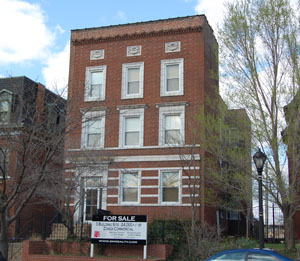Pendennis Club Apartment Building Listed in the National Register of Historic Places
 |
| Pendennis Club Apartment Building, Photograph by Lindsey Derrington |
August 12, 2008
The Pendennis Club Apartment Building, built in 1901-1902, was listed in the National Register of Historic Places on July 16, 2008. Standing at 3737 Washington Avenue in Midtown, it is locally significant under Criterion A for Social History as a home built by, and exclusively for, wealthy bachelors. A distinct bachelor subculture flourished in the United States between 1890 and 1930 as intense urbanization gave young men both the diversions and necessary opportunities to either put off or totally reject traditional married life. More than just adhering to a state of "singleness," bachelors developed complex patterns of behavior and hallmark institutions which defined them from mainstream society.
One group of bachelors from Saint Louis' University Club sought to provide a solution to the unique circumstances of bachelorhood with the creation of the Pendennis Club, named for William Makepeace Thackeray's Major Pendennis, the ultimate bachelor. The three-story building combined elements of the apartment and club house to accommodate nine men, all of whom would own stock in the Pendennis Apartment Company. Each floor contained three apartments and one common room; a maid and cook were on hand to perform those duties usually allotted to wives. Men were expected to stay single for a few years at least, and if one man left, his replacement would be subject to approval. Women, apart from the servants, were only allowed on the premises for special occasions. Located just one block west of the University Club in the heart of fast-paced, bustling Midtown, the Pendennis Club was ideal for single men on the prowl for entertainment. But while Saint Louisans found the club amusing at first, as time wore on and many Pendennis members remained single, suspicions of their independence came to the fore. News of flamboyantly colored pajamas and secretive ways surfaced in tongue-in-cheek newspaper articles. The club's membership, along with numbers of bachelors nationwide, dwindled during the 1930s. It closed in 1937.
